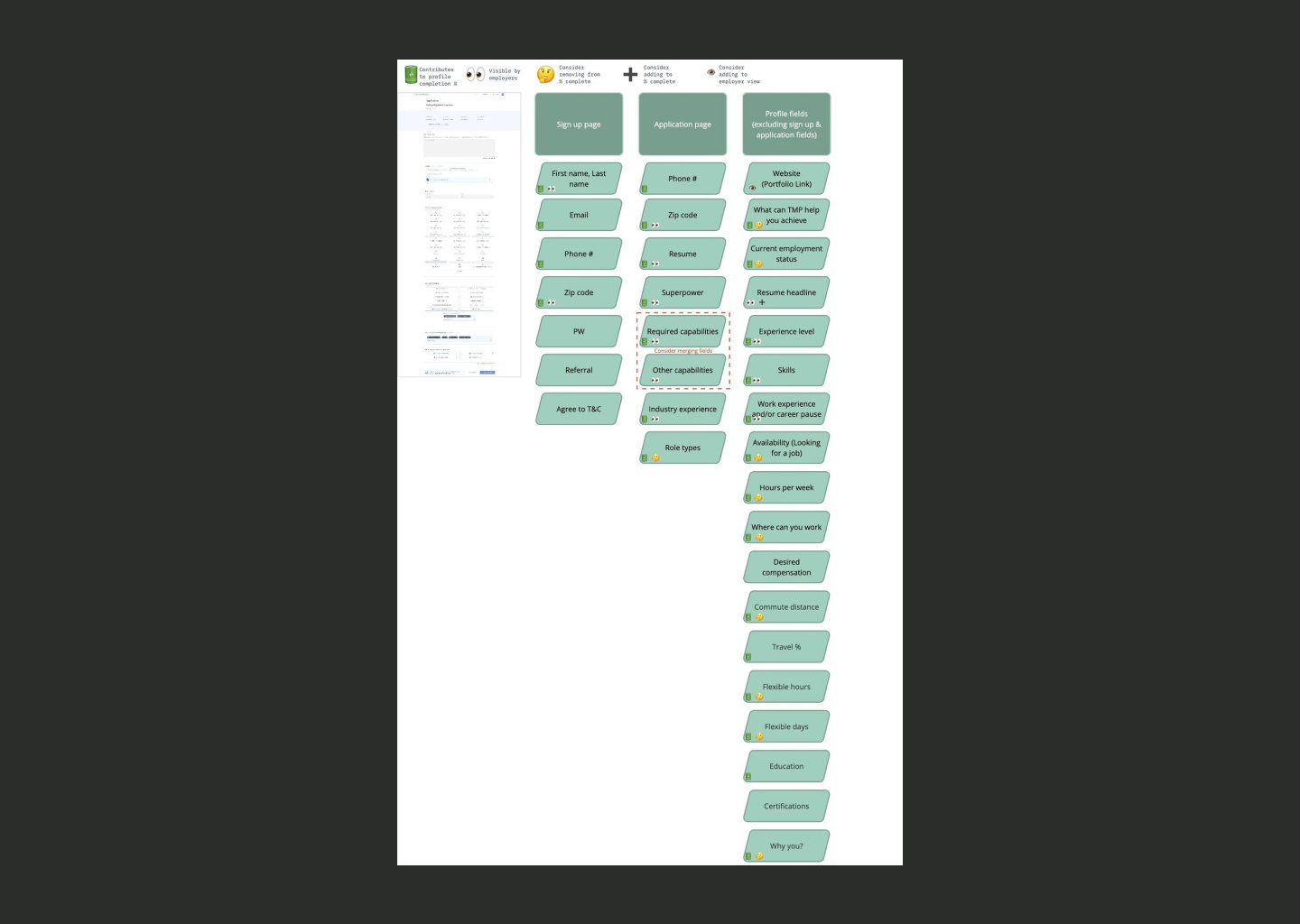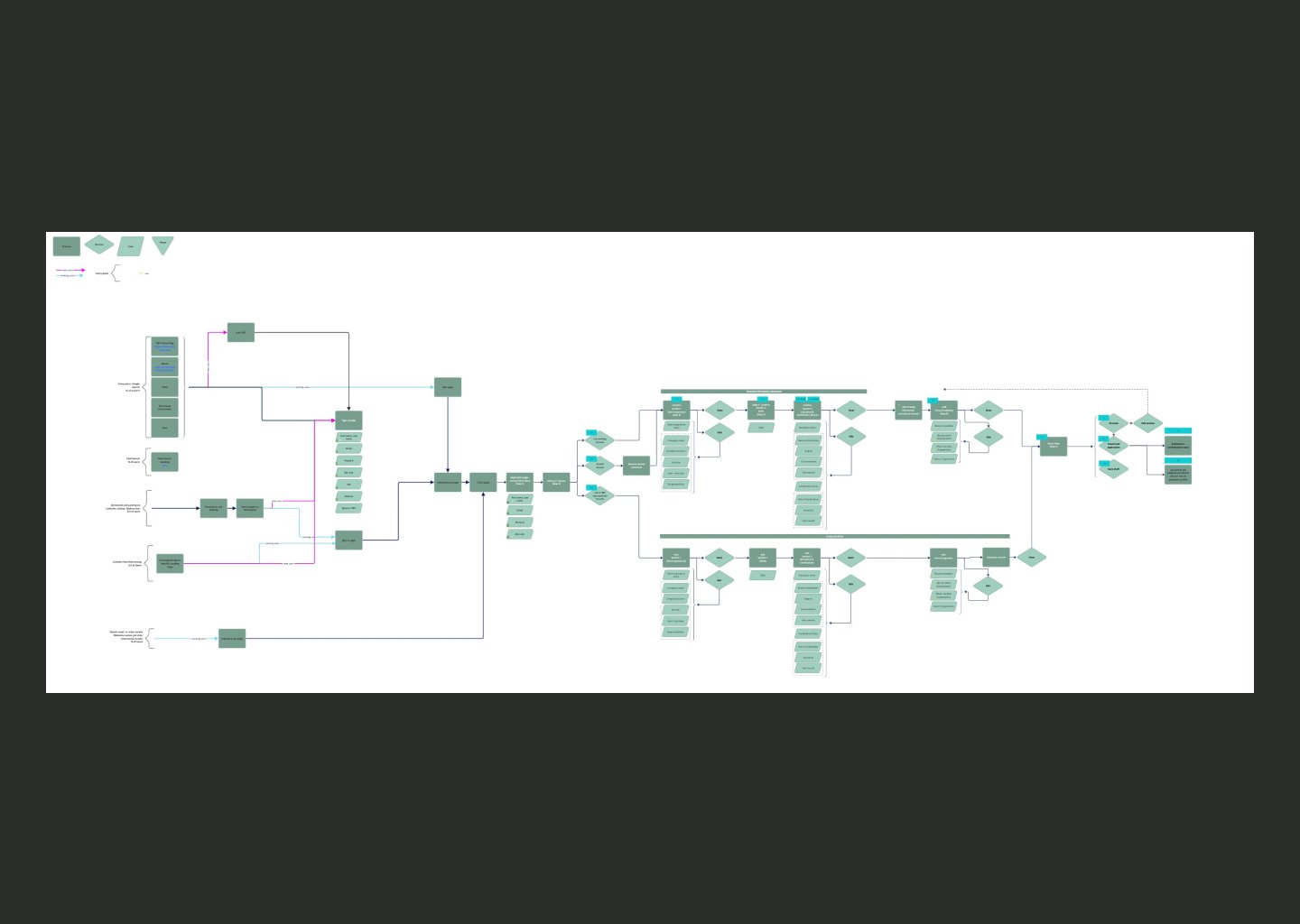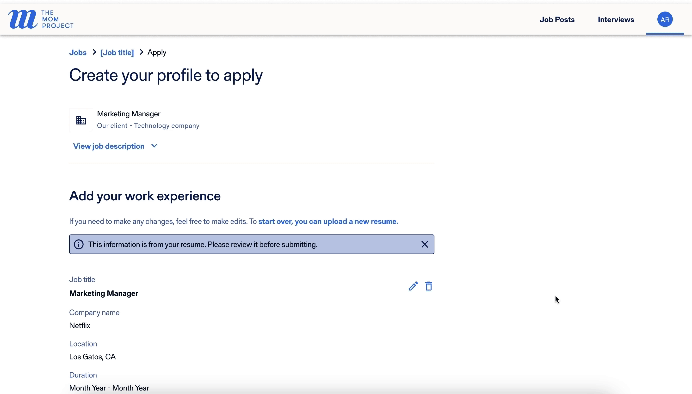Optimizing a Job Application Experience
2023
The Mom Project
Design Strategy
Visual Design/UI
Design Systems
Conceptual Designs
User Experience
Background
The Mom Project is a dual-sided marketplace for moms to find their next role with like-minded companies. Our talent community tasks are to create their profile, search for a role, and submit a job application. Our goal for this feature was to optimize the job application process by making it easier to create, modify, and review their profiles before submission.
My role
I was the Lead Product Designer on this project.
My responsibilities included:
Collaboration on requirements, user stories, and iterations
Collaboration to develop success metrics
Create task flows, wireframes, high-fidelity designs, and prototypes
Created and established design system components
Our talent struggle to effectively highlight their qualifications and experience as fit for a role. The job application asks for redundant information, lacks guidance, and conflates match preferences with what’s needed for a role. Our employers struggle to find relevant applicants quickly. Incomplete applications create a poor first impression.
The Design Process
A competitive analysis kicked off early design discovery work. Collaborating with my product manager, I pulled out major themes from our analysis.
If talent can’t provide a resume, they can build one within the application workflow or use their profile to apply.
Profiles tend to include additional details that support better job matching but are not included in the application process.
Screening questions & work authorization are the last steps of the application.
Step-wizard application and resume building are standard UX patterns.
A final review screen shows talent what their application will look like to employers.
Next, I conducted a heuristics analysis of the existing experience. This also included a thorough audit of the legacy experience and how and when existing data is collected and used.
Through this analysis, we realized we were collecting unnecessary information. Therefore, moving forward we aimed to clean out the clutter to ensure we took a holistic approach to simplifying and improving the experience to provide value for our talent. This enabled us to prioritize what data needs to be collected before the application submission and what information can be collected later.
Next, I created task flows and workflows to understand the new user journey. In collaboration with product and engineering, we used these to flag technical constraints or complexities, identify overlooked use cases, and identify project scope.
Utilizing the established design direction and the task flows, together with the product manager and engineering manager, we defined the scope and iterations for the project.
0.5 Simplify the current UI
Improve page hierarchy
Ability to preview job post within the application
Omit fields no longer used by the business
Provide better clarity on the role & company they’re applying for
Change profile completion % logic to focus on required fields
Add resume extraction
1.0 Optimize for complete bid & third-party
Introduce fields to create a more complete “profile” for self-serve employers to review at time of submission
Update front-end stack and UI
Update resume extraction UX
V.1.1 Education & certifications
Add education and certifications to the application workflow
I provided high-fidelity designs and prototypes to engineers for delivery and launch.
Learnings and success metrics
I learned how to navigate and be flexible during leadership and strategic changes to help meet business requirements. A week before handoff, our product strategy changed at a leadership level. As a result, we had to reduce the size of this project. We had one week to narrow the scope and turn around new designs within a week. This took alignment and communication between myself, my product partner, and the engineer manager. We had to revisit use cases, task flows, and final designs within a week.
We hypothesized that if we put talents' best foot forward, we would decrease the time to get relevant applicants on a job.
Decrease time to 2+ relevant application on a job
% of successful application rate
Do not harm the conversion rate and time to convert on the job application page
Increase talent profile completion (75%+), particularly those coming from a third-party source















